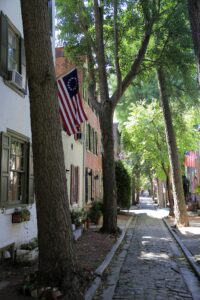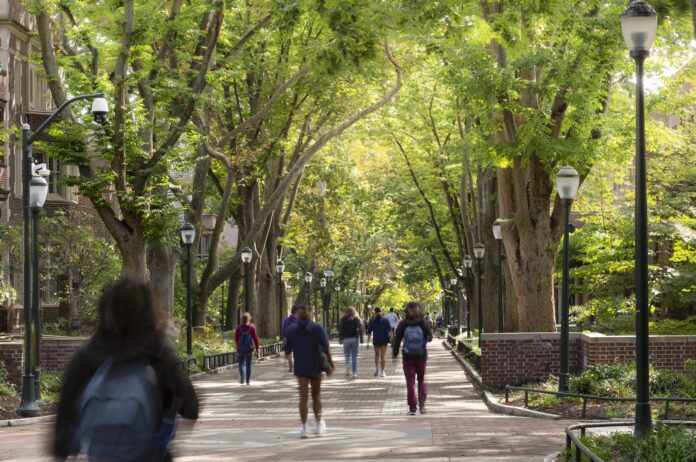Over the years, natural outdoor environments in cities have disappeared with ongoing urbanization. The City of Philadelphia’s Greenworks Program is a plan to increase tree canopy, or greenspace. A team of Forest Service researchers set out to discover where increasing tree cover across Philadelphia would help more of the city’s residents to live longer.
Michelle Kondo is a USDA Forest Service Northern Research Station scientist who studies the many benefits trees provide and the ways cities are investing in programs to expand tree cover.
“I have always been interested in how the design of cities and infrastructure can support both ecological and human health,” she said.

Kondo’s research addresses how different types of environments affect human health. She also explores the impact of municipal place and nature-based initiatives on preventing and reducing violence, injuries and disease. She has found that people who have access, parks, gardens, trees and forests often enjoy an improved quality of life.
A study of the association between self-reported health and the proximity of trees, grass and total vegetation near homes found significantly higher reporting of very good health for participants with high tree cover. There’s even evidence suggesting that trees in particular, compared with other forms of urban vegetation, have a profound impact upon human health and wellbeing.
Kondo’s work also examines issues related to environmental health and environmental justice, including the impact of innovative programs on public health and safety.
“Urban greenspace can be regarded as a preventive public health measure,” she said. “They provide opportunities for improving mental health, increased social interaction and physical activity, and reduced stress, crime and violence.”
In Philadelphia, her team found that 403 premature adult deaths – 3% of the city’s total mortality – might be prevented each year if the city increased tree canopy cover to 30% by 2025. This analysis is one of the first to estimate the number of preventable deaths based on exposure to greenspaces and its associated benefits, such as increased physical activity or reduced air pollution, noise, heat and crime. Before this study, no health impact assessment studies were available to provide policymakers with a comprehensive look at the health benefits of increasing the number of trees in urban areas.
The researchers determined that, to meet the city’s 30 percent tree canopy cover target, tree planting programs will not only need to target managed spaces like streets and parks, but also residential yards and other privately-owned commercial, industrial and institutional spaces.
The data indicated that the biggest benefits would occur within areas of lower socio-economic status, where residents currently live with lower tree canopy. Increasing tree cover in these neighborhoods would not only promote public health, but also decrease health inequalities and increase environmental justice.
Based on these findings, the researchers note that policymakers are warranted in viewing urban tree canopy preservation and expansion as a tool for promoting health and reducing health-care-related costs.
This approach can be applied to other cities with greening initiatives as well.
“My colleagues and I have applied this method to cities across Europe,” said Kondo. “I would also like to scale this study up to more cities across the U.S.”

